Of all the fighter aircraft to come out of the Second World War, the P-47 Thunderbolt is among the most storied. Popular and well-liked by historians and enthusiasts alike, the ‘ole ‘Jug‘, as it was called, served in all theaters and established an impressive combat record.
The type is particularly revered for both its ability to dish out damage and take great punishment in return. And that begs the question: exactly how tough was the P-47?

The P-47 Thunderbolt Might Have Been a Lightweight
The Republic P-47 came about in response to an Air Corps requirement made during the Summer of 1939. Designed by Seversky/Republic’s Alexander Kartveli, the original XP-47 was to have been a lightweight, high-altitude fighter.
The Air Corps requirements called for use of an Allison V-1710 liquid-cooled inline engine. Armament was standard for Army pursuit ships of the time: two fifty caliber guns in the nose, and two thirties in each wing.
Here’s a full-scale mock up of the XP-47 in the National Advisory Committee for Aeronautics (NACA) full scale wind tunnel.

P-47 Thunderbolt – The Juggernaut
During 1940, combat reports from Europe were changing minds about the kinds of aircraft required to fight the then-modern air war. I light of this, Kartveli considered his design insufficient, so he went back to the drawing board.
The result was certainly no light-weight. It was BIG for a fighter. And heavy, weighing in at 10,000 pounds empty and almost twice that when fully loaded.
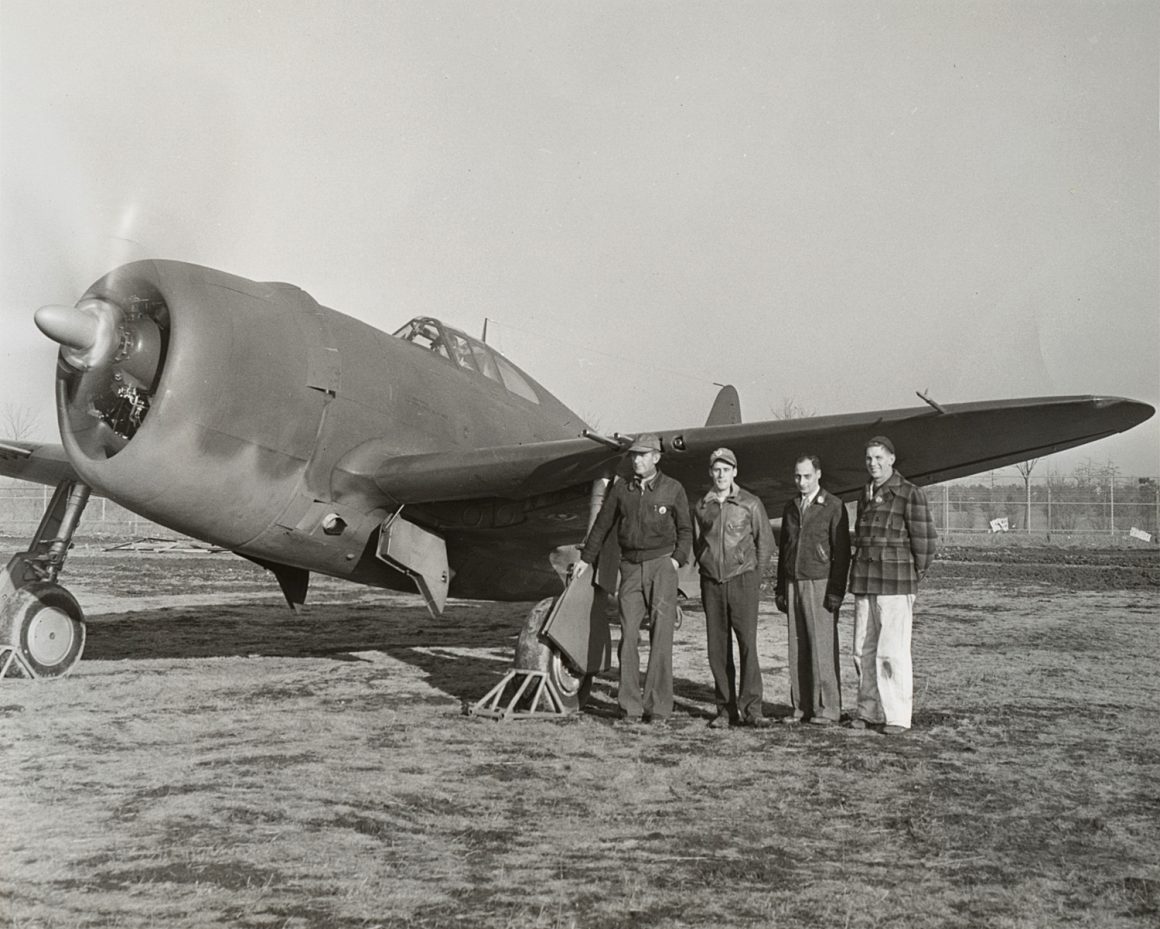
The First flight of what we today know as the Republic P-47 Thunderbolt took place on 6 May 1941. The ship was designated XP-47B. (The XP-47A had been a stripped-down version of the XP-47.)
As with any new bird, there were some kinks to be worked out. But the new design had shown enough potential for the US Army Air Forces (USAAF) to place an order for 773 aircraft.
Of these, 171 would be produced as P-47Bs, shown below. The rest would be P-47Cs. After that, it was the P-47D, or should I say P-47Ds.
Two major variants of the ‘D’ would be built, one with a ‘bird cage’ canopy, the other with a ‘bubble’ canopy. The latter provided better visibility for the pilot.

How Tough was the P-47 Thunderbolt?
One hallmark of the P-47’s design was its heavy armament. Carrying eight fifty caliber machine guns, the P-47 could tear up just about anything it came across.
It excelled as a fighter-bomber, and could carry, drop, and fire pretty much all the things that went boom in the USAAF inventory.
And it did. Often. So it’s with good reason that the P-47 is perhaps best-known as a ground attack aircraft.

In addition to its firepower, its rugged construction made it eminently suitable for the ground attack role. And this is was what made the P-47 Thunderbolt truly legendary.
Many tales have been told of pilots coming home in P-47s with damage that would have brought down other types. Huge holes in the wings or fuselage, missing tailplanes, bent props, holes in the prop, engine cylinders half shot away.
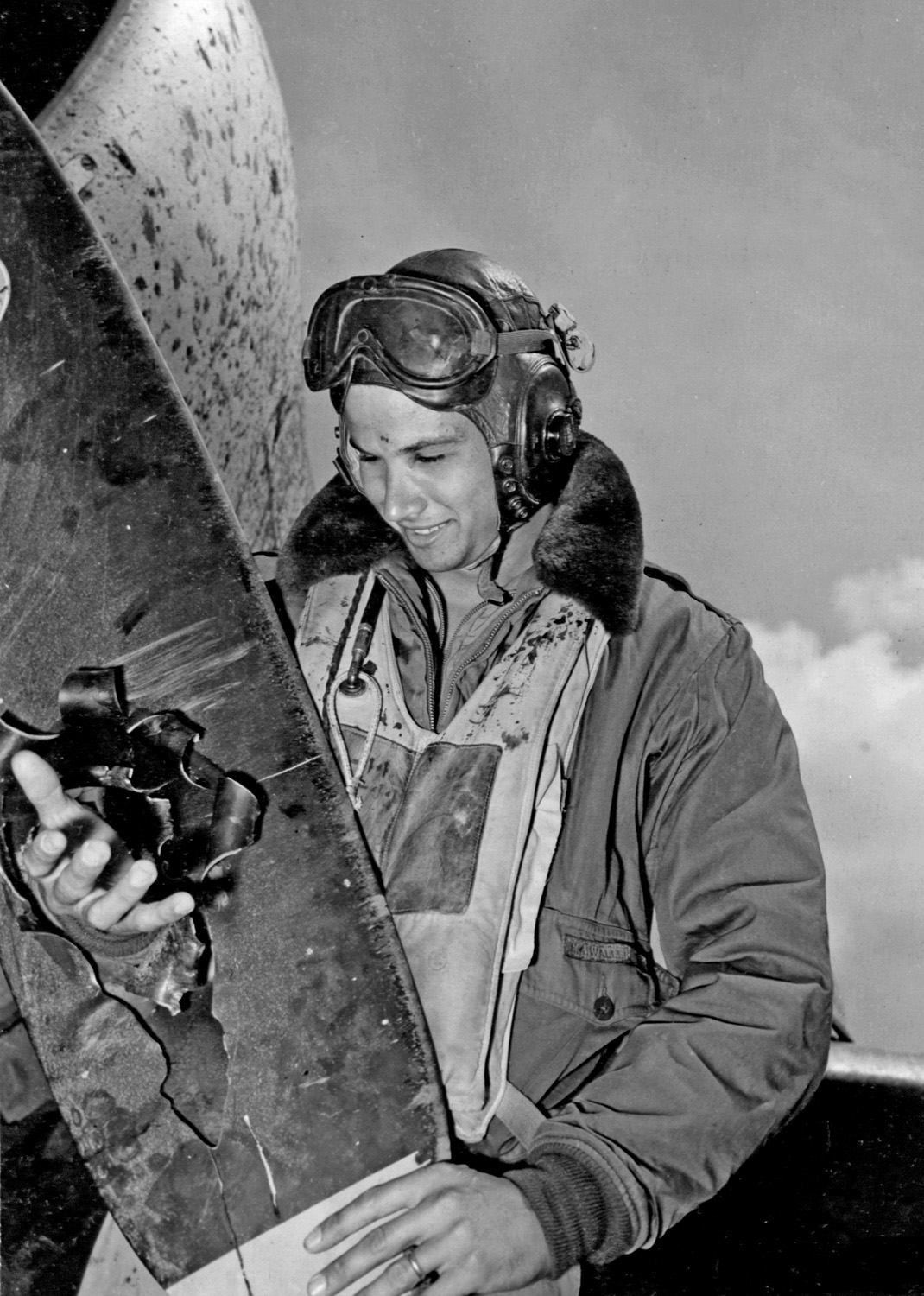
You name it, the Jug suffered it. And some of these stories would be hard to believe if there weren’t so much photographic evidence. Presented here is just a sampling of that evidence.
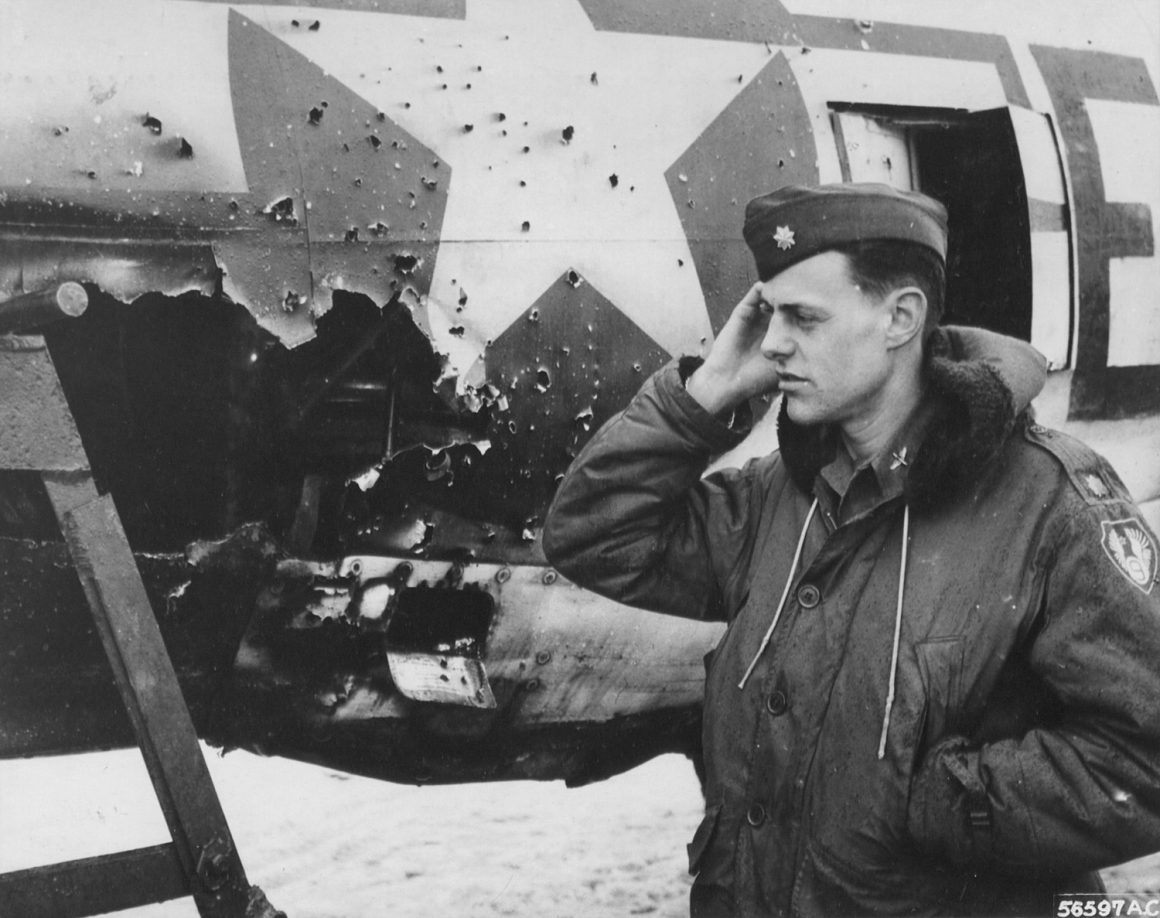
Bounced, and a 10,000-Foot Fall in a P-47 Thunderbolt
On 26 June 1943 B-17s of the 305th and 306th Bombardment Groups attacked aircraft factories and the airfield at Villacoublay, France. Second Lieutenant (2nd Lt.) Justus D. Foster of the 61st Fighter Squadron (FS), 56th Fighter Group (FG) flew the P-47C shown below as part of the escort.
During an engagement with Focke Wulf 190s of Jagdgeschwader 26, Foster was bounced and his P-47 hit by several 20mm rounds.
The ship went into a spin, Foster recovered, then went into another spin, falling more than 10,000 feet. He finally recovered for good and took refuge in cloud.
The Germans either thought he was done for or, more likely, were otherwise occupied, and Foster was able to escape. He made it back to England and bellied-in at RAF Hawkinge.
Foster praised the P-47, saying, “Boy, that ship sure deserves the name Thunderbolt.”

P-47 Thunderbolt: Tree Trimming Jug
On 1 April 1945 the 364th FS, 350th FG was on a sweep in Northern Italy. While strafing enemy vehicles along a road, 1st Lt. Richard P. Sulzbach had a moment of ‘target fixation’.
Coming in quite low, Sulzbach was so intent on hitting his target that he wound up flying through a group of trees. He made it back and landed AOK, but with ‘gifts’ for the ground crew. As the NARA caption states, he “picked up limbs, bark, and leaves in the fuselage and wings of his P-47”.

Sulzbach, on the left, relaying his experience to another pilot of the 350th FG. It had to have been a bit hair-raising, and he was relieved to have made it home, no doubt.

Should I Check the Oil, Sir?
Another 350th FG Jug, this time from the 347th FS. On 12 January 1945, 1st Lt. Edwin L. King was strafing enemy gun positions near Brescia, Italy In The Po Valley.
His Jug took a flak hit in the main oil line, and almost immediately the windscreen was coated. Opening the canopy to see out the side, he soon became drenched with the black stuff.
King was able to make it home AOK, but the engine quit soon after landing.
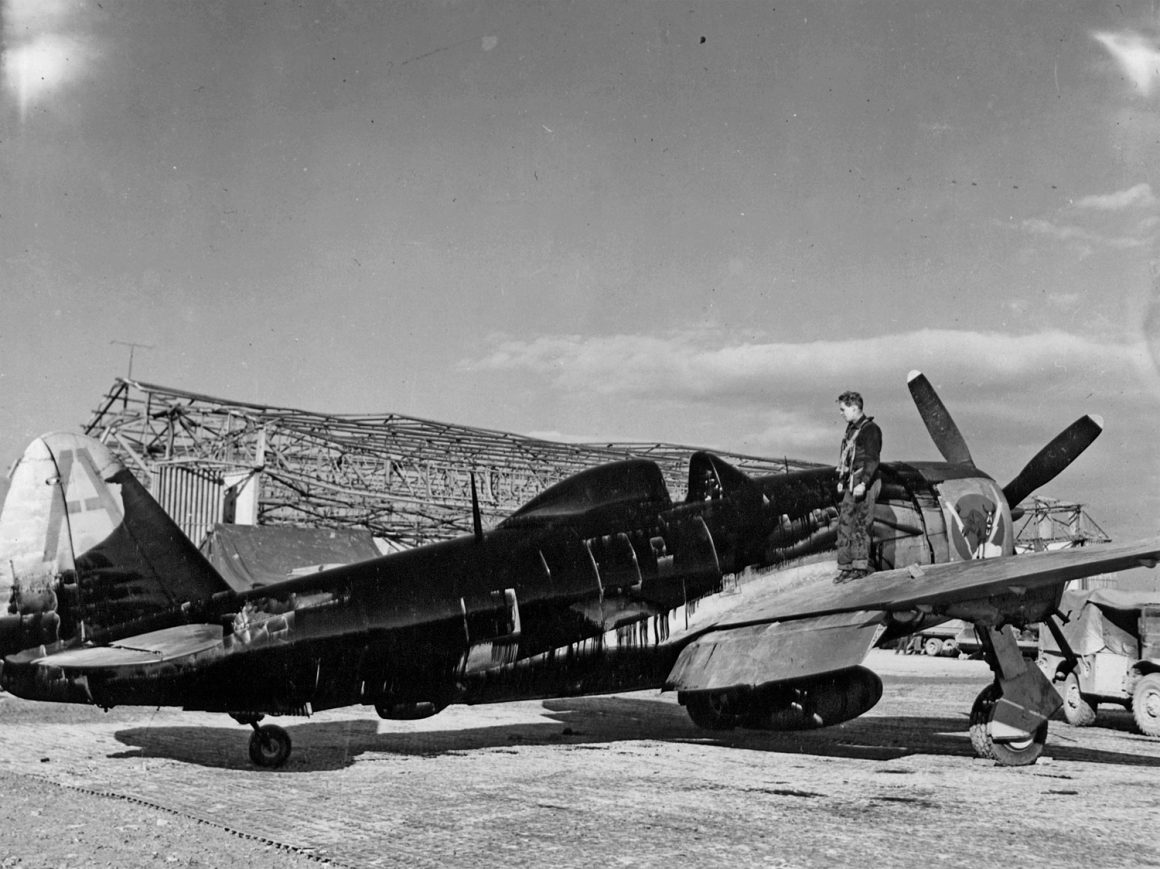
Though no major damage is evident, these photos do illustrate the P-47’s ruggedness in another way. Specifically, they testify to the reliability of the Jug‘s Pratt & Whitney R-2800 engine, even when starved of its lifeblood.

The P-47 Thunderbolt was by no means invincible. If it was hit with enough bullets and exploding shells, it was going down, just like any other ship. But alotta times it took a whole lot more bullets and shells than usual.
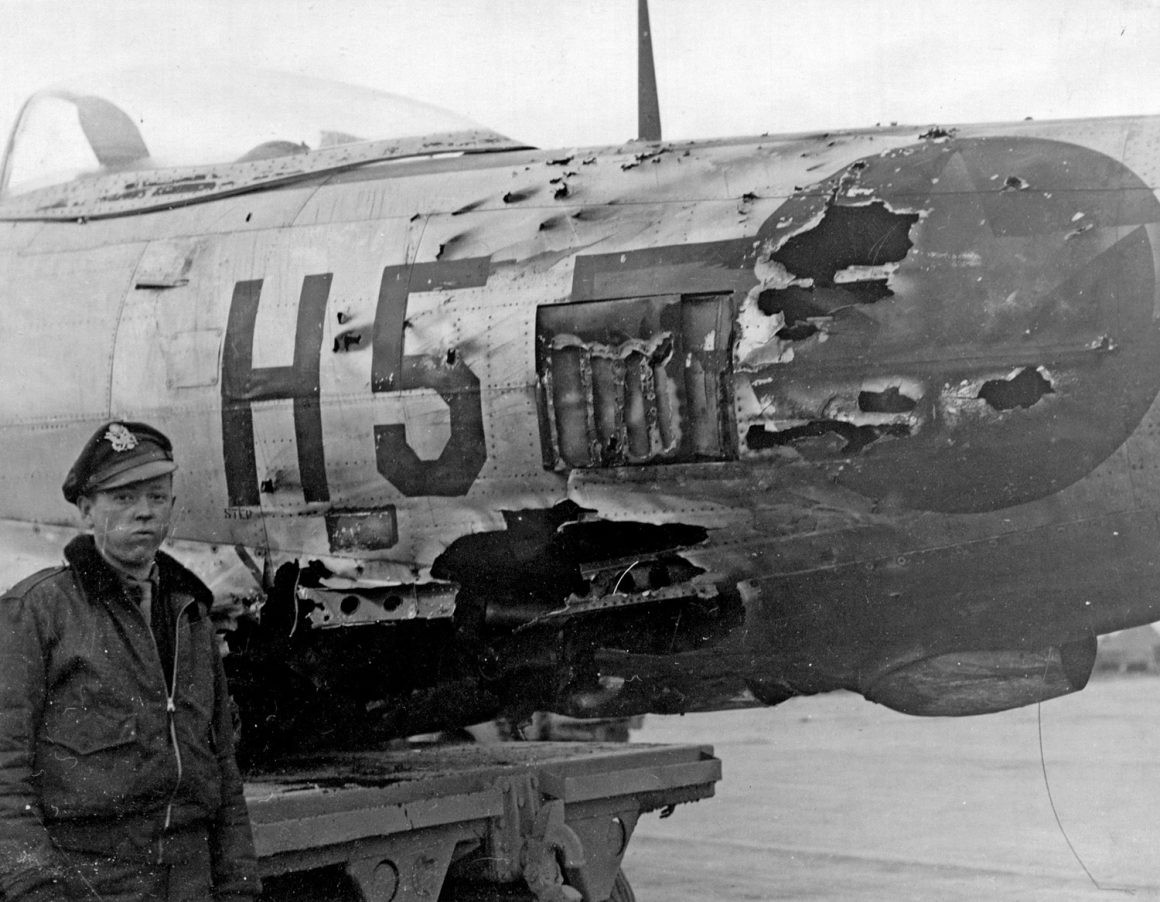
Many pilots have marveled at the P-47’s ruggedness. And it’s because of that ruggedness that many of those pilots came home.

